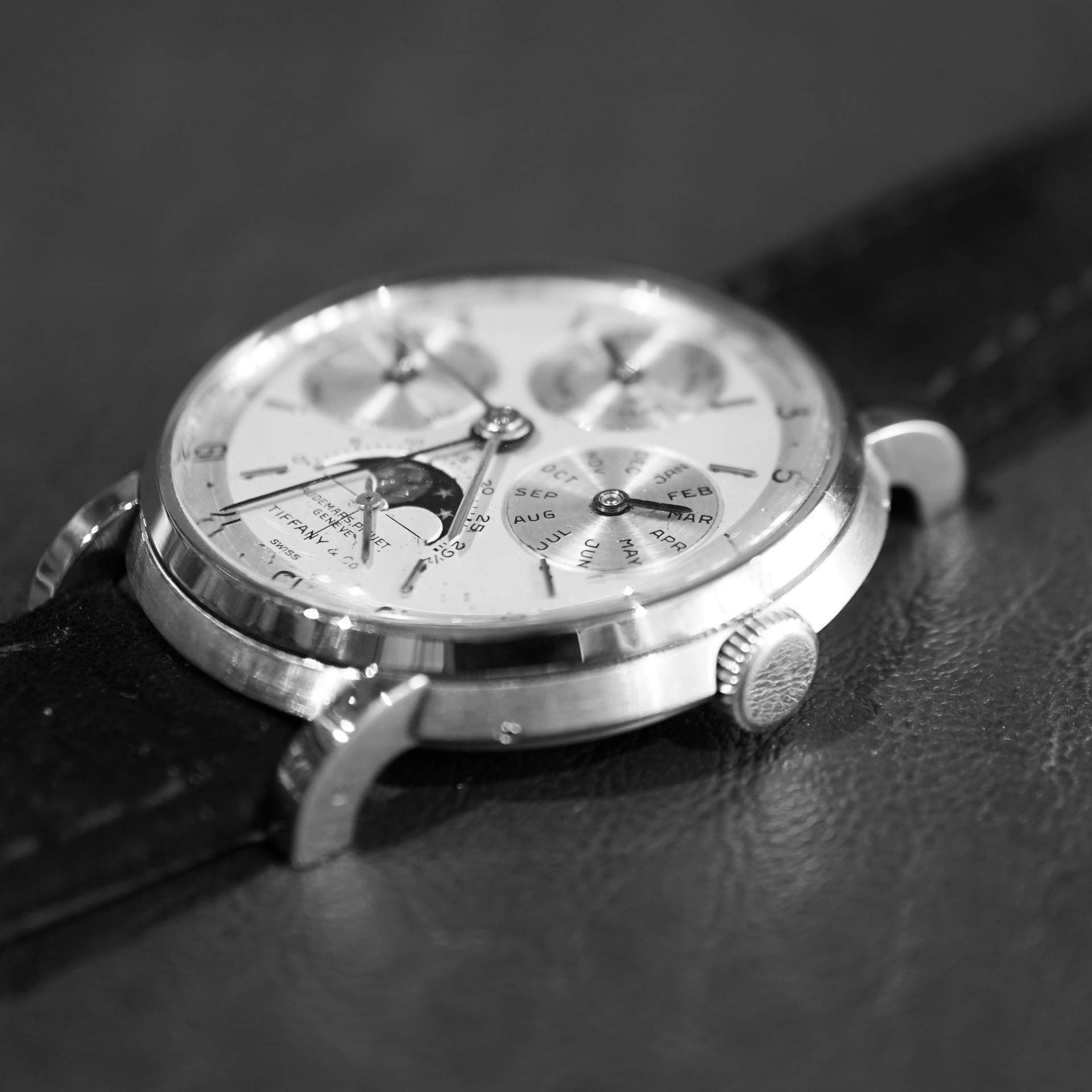After a little break, we are back with the 7th PAK (Past Auction Killers) watch segment. It was only inevitable, that the very first perpetual calendar watch – with leap year function, would be the subject of my next PAK watch.
When Benjamin Clymer (founder of Hodinkee) once said that he would be happy only collecting vintage Audemars Piguet – I fully understand why. They are rare, are made of exceptional quality and are beautiful. If you consider that between 1920 and 1970 less than 208 complications with calendar watches left the factory – you begin to understand why collectors all over the world – flock to a vintage Audemars for a calendar wristwatch when they come for sale.
For me one of the most beautiful of all calendar watches is the first perpetual calendar watch with leap year – the Ref 5516.
I was first introduced to the 5516, at Christies, when they showed me a 5516 in a pre-sale in New York 2015. The watch was a dream and this watch belongs to one of my many regrets of watches that I did not end up buying. However, the watch that is subject to this PAK post is another 5516. It was sold by Christies in the middle of the financial crisis in November 2008.
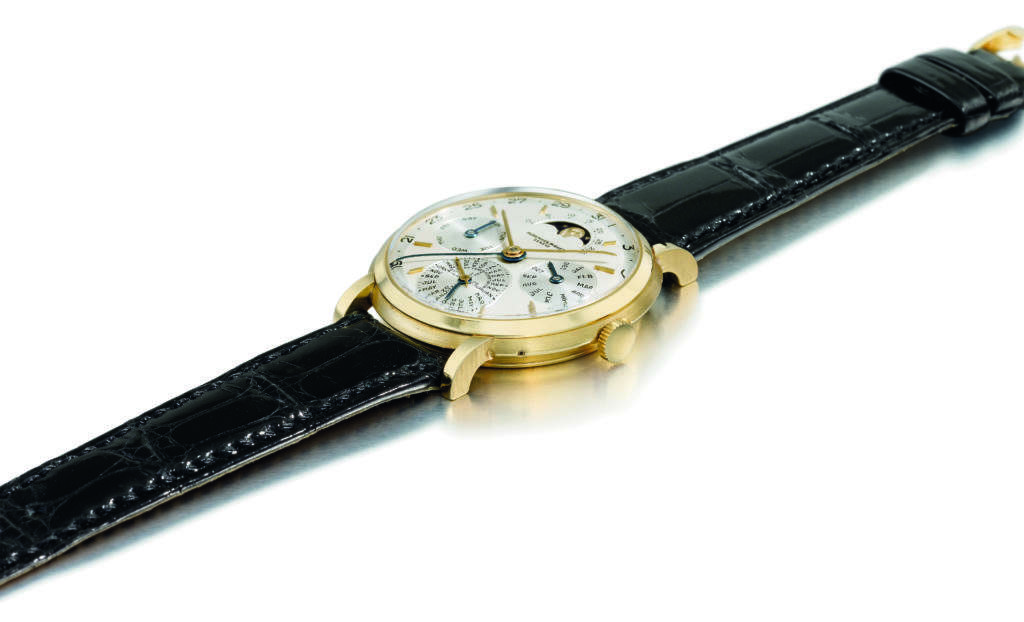
(Credit: Christies)
While visiting the Audemars museum and having the pleasure of talking to Sebastian Vivas, I got to know some other Ref 5516. In fact Audemars, through a bit of luck and fate, now owns six of the nine 5516 perpetual calendars ever made. One of the 5516 that is my favourite, is the watch above with moon phase at 12 o’clock instead of the usual six o’clock position.
Many of the 5516 have the moon phase at six oclock. In fact, many other brands that had moon phases in their complications like the Rolex 6062, or the Patek 3448, all had the moon positioned at six oclock. It is perhaps more harmonious in terms of layout on the dial. The reason why I like this particular 5516 so much, is for the detailed leap year and monthly calendar. Also the fact that the moon is for once at 12. Let us look at the details below.
Dial details
The reference 5516 is so attractive in my view because of the harmonious layout of the dial.
On the outer ring, you have the date which carries a slightly different color texture on the dial lending the watch a wonderful two-tone appearance. But it is the centre part of the dial where things get very interesting.
If you look at the six o’clock subdial you notice the leap year indicator, which is usually found at 12 o’clock indicator with other 5516 like this one here. What makes this watch special though is the months that Audemars has squeezed in between each leap year. There are an astounding 48 months on that sub-dial – 12 months for each quarter and each leap year indicator. So, if you read the watch as it tells the time in the picture – we are now in the second year of the leap year cycle and in the month of November.
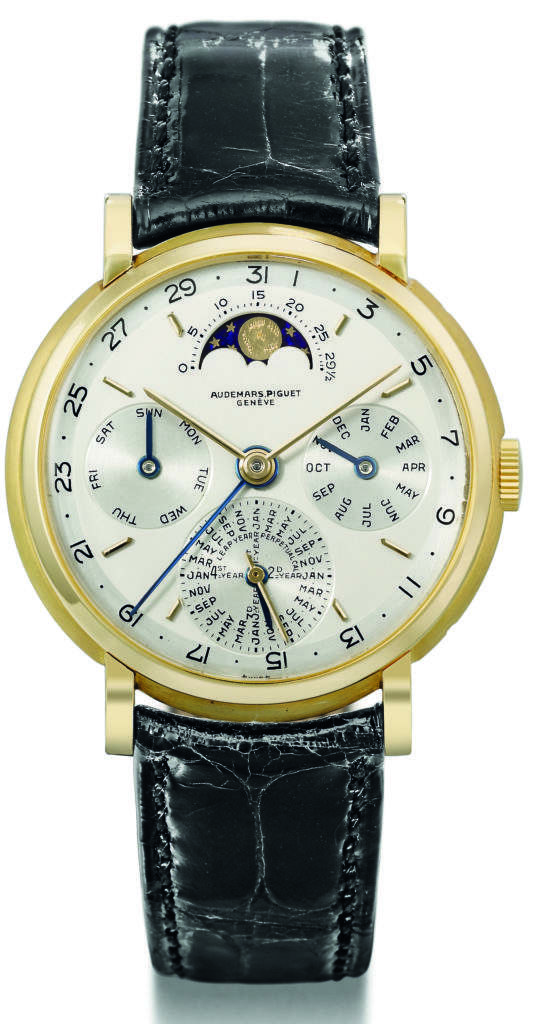
(Credit: Christies).
Is this sub-dial not a piece of art?
What is even more peculiar is the following. If you look at the right sub-dial you notice another monthly indicator. The month of course is November again. Now it is fair to ask the following question: why do we need two dials showing the month – even if one dial is showing the month within a leap year cycle? You might even be tempted to think that maybe Audemars did a mistake when constructing this dial? It might seem like it, but my guess is that they did this completely purposely. They wanted two months. One where you read it normally, and one month part of the leap year cycle indicator.
It is a masterpiece of a dial and for me one of the all time great dial details.
The construction of the case is also a dream – with the winding crown that is partially set into the case.
Furthermore, the watch carries a snap on case-back and is powered by a Valjoux movement Cal. VZSSQP (QP standing for quantieme perpetuelle or perpetual calendar). The movement is a nickel finished movement with 18 jewels. Below you see the wonderful movement 13 VZSSQP signed Audemars. This movement below is of another Ref 5516 with moon phase at six o’clock and leap year at 12 o’clock as can be seen by the 1-4 leap year indications below.
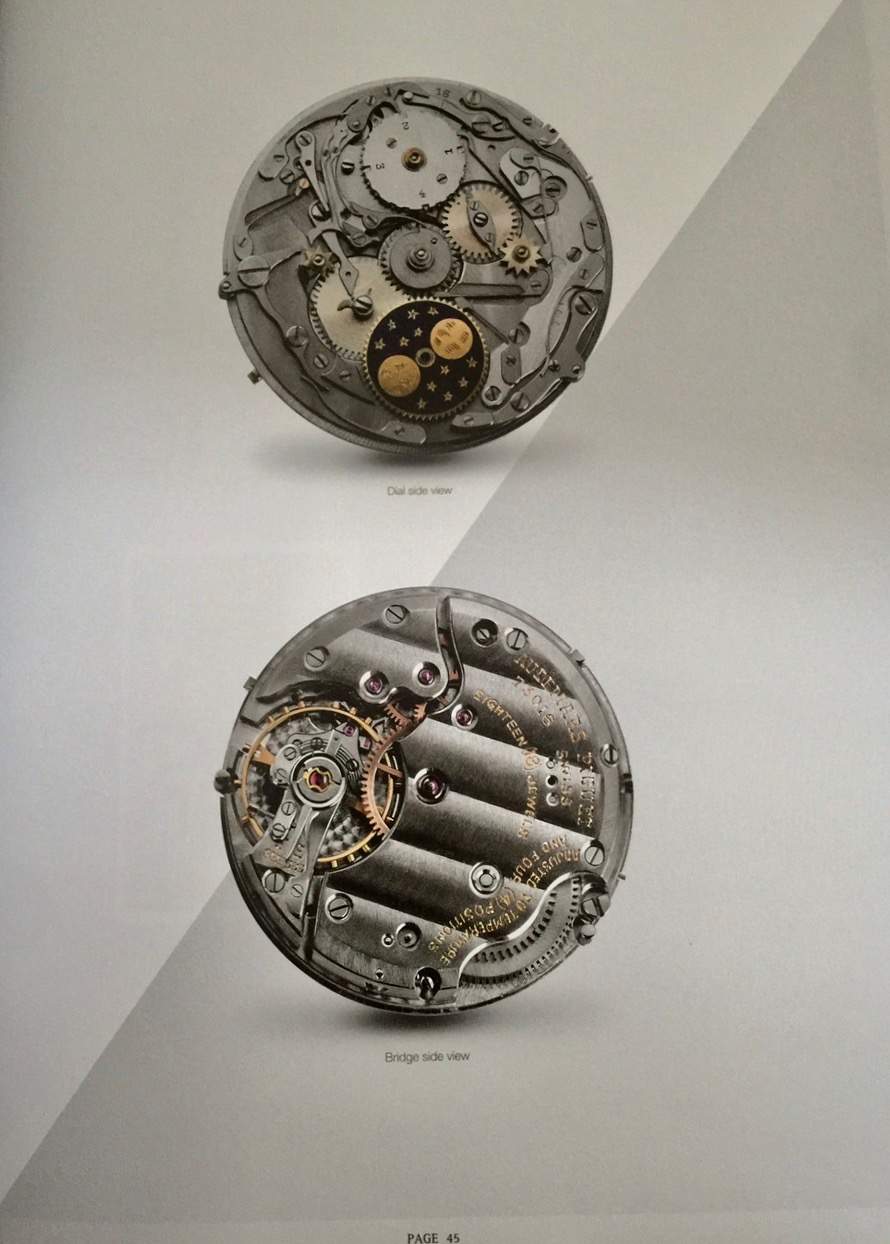
(Credit: Collector book, Calendar watches AP).
A PAK watch without a doubt
This watch has all the attributes of making it a PAK watch. Let me list them for you:
- It is arguably one of the most important wristwatches Audemars has ever made. Only nine pieces are known.
- The 5516 represents a milestone in watch history: The first perpetual calendar with leap year function from any brand.
- It is a rare complication with moon phase at 12 o’clock and perpetual calendar function.
- One of the most important watches made after the post war – with fine two tone dial.
- The attention to detail on the dial with 48 month indication divided into four parts is mind-blowing.
- This very watch represents the finest in haute horology (high end watchmaking) of the post war era. A super rare fine and complicated Audemars Piguet.
The buyer knew very well what he was doing.
In the midst of the worst financial crises, in November 2008, a collector stepped up and paid a whopping CHF 375’000 for this watch against an estimate of CHF 80 – 120’000. He recognised the fine craft and complicated detail in this watch – it represents the pinnacle of high end watchmaking of the post war era. Consider the fact that it would take Patek another 26 years before they introduced the first perpetual calendar with leap year function in 1981 with the reference 3450. This is how far ahead of its time Audemars was.
I respect the buyer of this watch for his vision and courage. A trophy asset came up at auction and the buyer stepped up and paid a superb price – recognising the quality of this watch.
Well done sir.
Let us look at two other 5516 from Audemars. We start with one that sold in 2015 at Christies for $545’000. It is a dream watch with the moon phase at 6 o’clock – the most common layout.
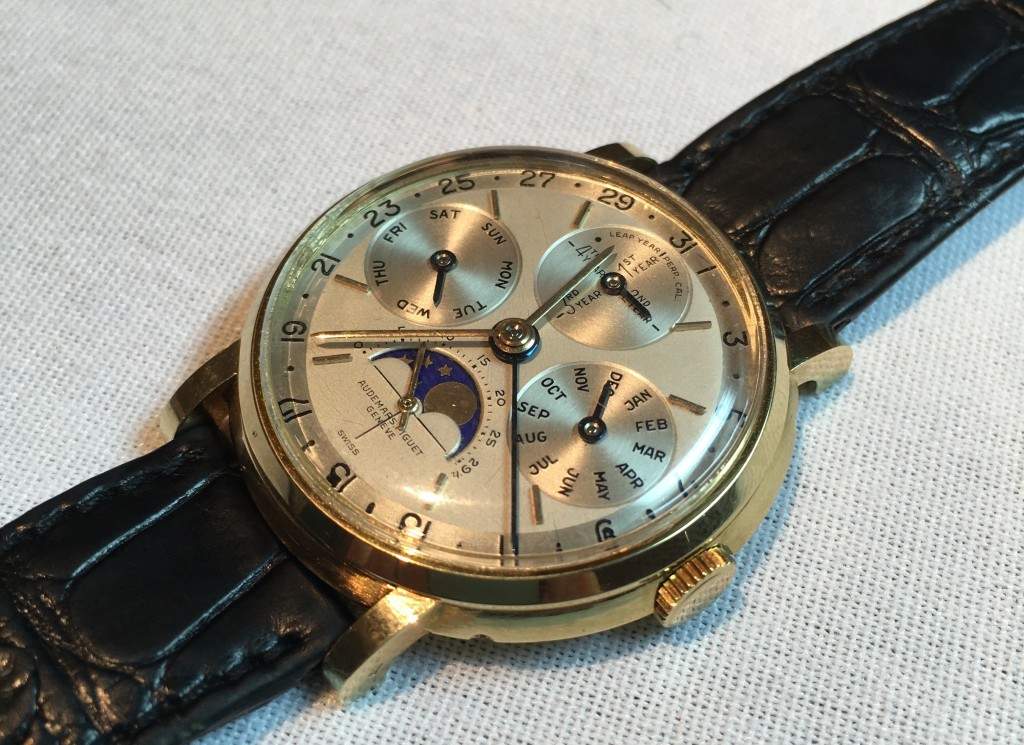
Another dream 5516 is this double signed Audemars reference 5516 with Tiffany signature – now back into the hands of Audemars private collection. Notice how the crown is partially set into the case.
